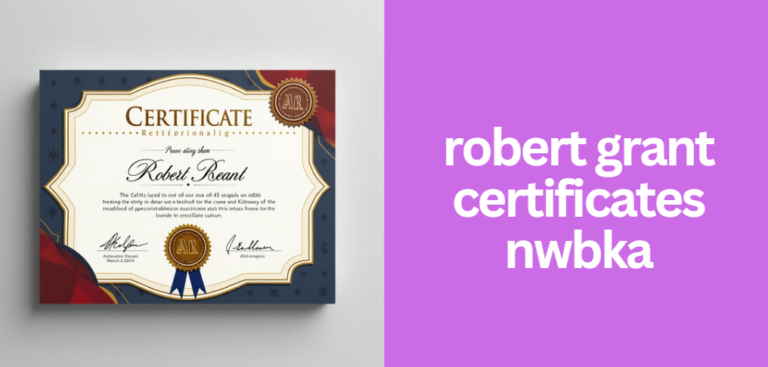The Ultimate Guide to a weirdass skidder convert
In the world of heavy machinery and forestry operations, innovation often comes in unexpected forms. This guide explores the intriguing concept of a weirdass skidder convert—a term that encapsulates unconventional yet creative modifications made to traditional skidders. Whether you are a DIY enthusiast, a seasoned professional, or simply curious about the innovative repurposing of machinery, this article provides a detailed, easy-to-follow resource that covers every aspect of these unique conversions.
Introduction
The modern forestry and industrial sectors are continually evolving, and one of the most fascinating developments is the modification of standard skidders into something entirely unexpected. A skidder, typically used for hauling logs and managing forestry debris, has seen innovative twists that have given rise to what many now refer to as a weirdass skidder convert. This guide will explain the concept, explore its background, and outline the technical and practical steps involved in such conversions. By doing so, it aims to empower you with the knowledge to either undertake a conversion yourself or simply appreciate the ingenuity behind these modifications.
Understanding the importance of this subject is crucial. Reliable and innovative modifications can lead to improved efficiency, reduced operational costs, and new functionalities that standard models might lack. This article is designed to be your comprehensive resource, covering everything from historical context and technical details to real-world case studies and troubleshooting tips.
Background and Context
Historically, skidders have played a critical role in the forestry industry. Originally designed for straightforward tasks such as pulling cut trees, these machines have been the backbone of many logging operations. Over time, as the needs of the industry evolved, so did the ingenuity of those who work with these machines. This evolution has led to the birth of modifications that go well beyond standard repairs or upgrades.
The term a weirdass skidder convert embodies this innovative spirit. It refers to a range of modifications—from converting trenchers into mini skidders to turning scale models into remote-controlled marvels—that repurpose and enhance the functionality of existing machinery. This trend is part of a broader movement within the industry, where creativity and technical skill combine to solve practical problems in unexpected ways.
Understanding the Weirdass Skidder Convert Concept
At its core, a weirdass skidder convert is about reimagining what a skidder can do. Instead of sticking to the conventional design and usage, innovators look at every component and ask, “What if this could be used differently?” The answer often lies in a mix of creative thinking and technical modification.
This concept is not without its challenges. Key components such as the engine, chassis, and hydraulic systems often require significant modifications to function effectively in their new roles. However, the benefits of such conversions can be substantial. Enhanced mobility, improved efficiency in unconventional terrains, and even new capabilities like remote control operations are just some of the advantages that come with these innovative approaches.
Experts in the field emphasize that while the idea may seem unconventional, the practical outcomes are frequently impressive. By merging traditional engineering with modern technology, these conversions offer a glimpse into the future of heavy machinery, where adaptability and innovation are paramount.
Technical Aspects and Materials
Embarking on a project like a weirdass skidder convert requires a solid understanding of both the technical and practical aspects. The conversion process typically involves a careful assessment of the existing machinery, followed by a step-by-step modification plan. This section delves into the tools, materials, and techniques necessary for a successful conversion.
First, it is important to gather all the required tools and equipment. This includes inspection tools, welding machines, cutting tools, and specialized equipment for reassembling and testing the modified parts. The process begins with an initial assessment of the skidder’s condition, determining which components are viable for modification and which need replacement.
The following table summarizes the primary stages of the conversion process:
| Conversion Stage | Key Action | Tools Required |
|---|---|---|
| Initial Assessment | Evaluate current skidder condition and potential modifications | Inspection tools, checklist |
| Dismantling Components | Carefully remove outdated parts for modification | Wrenches, screwdrivers, safety gear |
| Custom Fabrication | Modify or replace parts with innovative solutions | Welding machine, cutting tools, fabrication materials |
| Reassembly and Testing | Reconstruct the skidder and test functionality | Diagnostic equipment, testing protocols |
Safety is paramount throughout this process. Ensuring that all modifications adhere to safety standards not only protects the operator but also guarantees the reliability of the converted machine. Experts recommend taking extra care during the custom fabrication phase, as precision here determines the overall success of the conversion.
Case Studies and Real-World Examples
Real-world examples provide invaluable insight into the practical application of a weirdass skidder convert. One notable case involved a forestry operation that repurposed an older skidder model by converting it into a multi-functional machine capable of both hauling logs and performing specialized digging tasks. This innovative approach not only improved efficiency but also extended the life of equipment that would otherwise be retired.
In another example, a group of hobbyists transformed a scale model skidder into a remote-controlled unit. Their project, documented through videos and blog posts, showcased not only the technical feasibility of such conversions but also the creativity that drives these projects. These examples serve as a testament to the potential of merging technical know-how with creative problem-solving.
Through interviews with conversion experts, several recurring themes emerge: thorough planning, meticulous execution, and the willingness to experiment with new ideas. The lessons learned from these case studies underscore the importance of a structured approach and the value of detailed documentation throughout the conversion process.
Troubleshooting and Problem-Solving
No conversion project is without its challenges, and a weirdass skidder convert is no exception. Common issues include engine performance drops, structural instability, and electrical malfunctions. Addressing these challenges requires a combination of diagnostic techniques and practical problem-solving skills.
When troubleshooting, it is essential to systematically identify potential causes. For example, if you experience a drop in engine performance, it could be due to improper calibration during the modification process. Similarly, structural issues may arise from inadequate reinforcement of newly fabricated components. The following table outlines some common problems along with their potential causes and recommended solutions:
| Problem | Potential Cause | Suggested Solution |
|---|---|---|
| Engine performance drops | Improper calibration during conversion | Recalibrate engine settings and conduct thorough system checks |
| Structural instability | Insufficient reinforcement of modified parts | Reinforce key joints and re-test stability |
| Electrical malfunctions | Wiring errors during component replacement | Inspect wiring, refer to schematics, and correct connections |
Frequently asked questions in various forums and expert discussions reveal that proactive troubleshooting is the key to a successful conversion. Regular testing and follow-up checks during each stage of the process can help mitigate many of the common issues encountered.
Future Trends and Innovations
Looking ahead, the future of a weirdass skidder convert is filled with exciting possibilities. Emerging trends suggest that technological advancements—such as improved materials, automation, and digital control systems—will play a significant role in shaping future conversions. Industry leaders are already exploring concepts that integrate artificial intelligence and IoT (Internet of Things) to monitor and optimize the performance of converted machinery.
Innovative ideas are continuously emerging from both professional circles and DIY communities. These ideas range from environmentally sustainable modifications to high-tech upgrades that push the boundaries of traditional machinery. As these trends evolve, the potential for even more groundbreaking conversions becomes increasingly promising.
Comprehensive Guide for DIY Enthusiasts and Professionals
For those ready to embark on their own project, this section serves as a practical guide to executing a weirdass skidder convert. The process begins with detailed planning, including regulatory and safety considerations that must be adhered to throughout the project.
The DIY conversion guide emphasizes the importance of a workflow checklist. This checklist should include every step from initial assessment to final testing, ensuring that no detail is overlooked. Alongside this checklist, additional resources such as instructional videos, online forums, and supplier contacts provide further support.
A typical workflow might include the following steps:
- Conduct an initial assessment and document the current state of the skidder.
- Develop a detailed plan that outlines which components will be modified.
- Gather all necessary tools and materials.
- Carefully dismantle the machine, keeping track of all parts.
- Perform custom fabrication and modification.
- Reassemble the machine and conduct rigorous testing to ensure functionality.
- Document every stage of the process for future reference and troubleshooting.
By following these steps, both DIY enthusiasts and professionals can ensure a systematic approach to their conversion project, minimizing risks and maximizing results.
FAQs
1: What is the estimated budget range for a weirdass skidder convert project?
Determining the budget for a conversion can be challenging, as costs depend on the scope and complexity of the modifications. For projects involving minor updates on older models, you might expect to invest a few thousand dollars. However, if you’re planning extensive customizations with premium materials and advanced technology integration, costs can rise significantly, sometimes reaching tens of thousands of dollars. It is essential to include a contingency for unexpected expenses and to get detailed quotes from suppliers and fabricators before starting.
2: How long does the conversion process usually take from start to finish?
The timeline for completing a weirdass skidder convert can vary greatly. For simpler modifications, the process might take only a few weeks if you have all the necessary resources and expertise on hand. More complex conversions, which involve custom fabrication, detailed testing, and potential regulatory reviews, can extend the timeline to several months. Planning your project in phases with clear milestones can help manage the schedule more effectively.
3: Which types of skidders are most suitable for a conversion project?
While many skidders can be modified, older models with simpler mechanical systems are often more popular for conversion projects. Their straightforward design allows for easier modification and adaptation. In contrast, newer models equipped with advanced electronics and integrated control systems may pose additional challenges. Evaluating the base model’s design and understanding its mechanical layout is crucial in determining its suitability for a unique conversion project.
4: Are there legal or regulatory considerations to keep in mind before starting a conversion project?
Yes, there are important legal and regulatory aspects to consider. Regulations can vary significantly depending on your location and the intended use of the modified skidder. In many cases, custom modifications may need to adhere to local safety standards or even undergo inspections and certifications before being approved for use. It is advisable to consult with local regulatory bodies or industry experts to ensure that your conversion meets all required guidelines and standards.
5: What maintenance practices should be followed after completing a weirdass skidder convert?
Post-conversion maintenance is critical for ensuring the long-term reliability of your modified skidder. Regular inspections are recommended, particularly of any custom-fabricated parts or new systems integrated during the conversion. Establishing a scheduled maintenance plan—keeping detailed logs, conducting periodic professional evaluations, and replacing worn components proactively—can help mitigate potential issues before they escalate. These practices not only extend the life of the equipment but also ensure ongoing safety and performance.
Conclusion
In summary, a weirdass skidder convert represents more than just a modification; it is a creative reimagining of traditional machinery that opens up new possibilities in the forestry and industrial sectors. This guide has provided an in-depth look at the concept, covering historical context, technical details, case studies, troubleshooting, and future trends.
Other Posts Like weirdass skidder convert
The Ultimate Guide to kamiikatzee
The Ultimate Guide to corinna kopf fapello: Comprehensive Analysis for 2025






